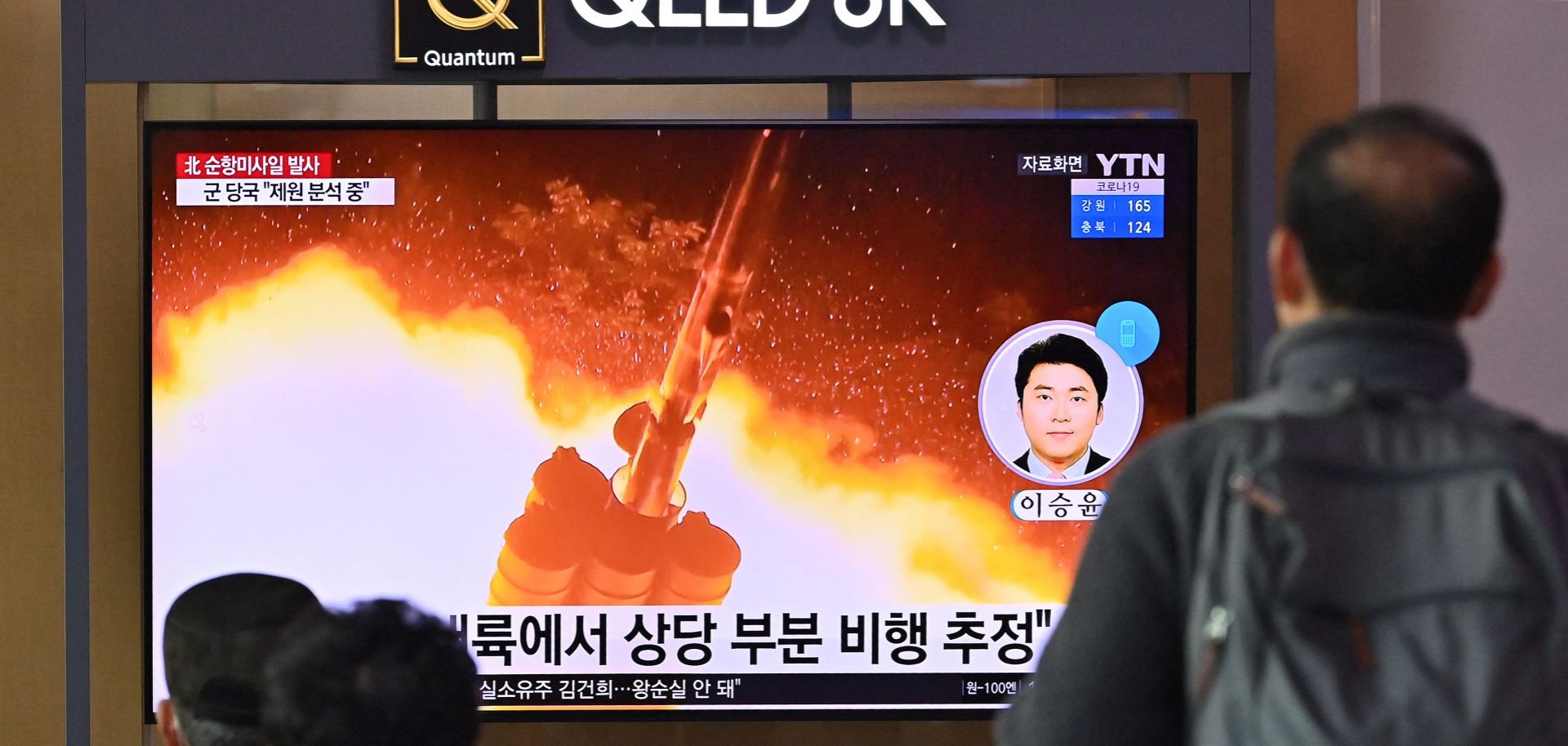North Korea’s January missile tests highlight Pyongyang’s continued focus on strengthening its conventional military deterrent capability while keeping pace with advancements in South Korea’s missile developments, as well as expanded anti-missile systems in Korea and the broader region. A more robust conventional deterrent would give North Korea more confidence in its relations with the United States and its neighbors, and may offer Pyongyang greater room for escalation if political or security relations worsen.
North Korea has tested eight missiles since Jan. 1, including two hypersonic missiles, two rail-launched short-range ballistic missiles, two tactical guided missiles, and two cruise missiles. January is an unusual time for North Korea to test missiles, and the pace of tests this year is significantly higher than the past two years amid the COVID-19 pandemic. Pyongyang also recently suggested that it may lift its self-imposed moratorium on long-range ballistic missile and nuclear tests, though South Korean officials have yet to report any unusual activity at North Korea’s primary nuclear test site.

Since the collapse of U.S.-North Korea nuclear negotiations in early 2019, Pyongyang has primarily tested shorter-range missile systems and larger-caliber multiple launch rocket systems (MLRS), which are designed to overwhelm or evade missile defense on the Korean Peninsula. North Korea has also continued to test its second-strike capabilities, including its rail-launched missiles and its submarine-launched ballistic missiles.
In addition to ballistic and cruise missiles, North Korea has expanded the range and accuracy of its MRLS systems over the past several years — moving away from its old dependence on outdated artillery systems that primarily targeted major population centers, and shifting to more tactical systems that can strike at key military targets in South Korea.



